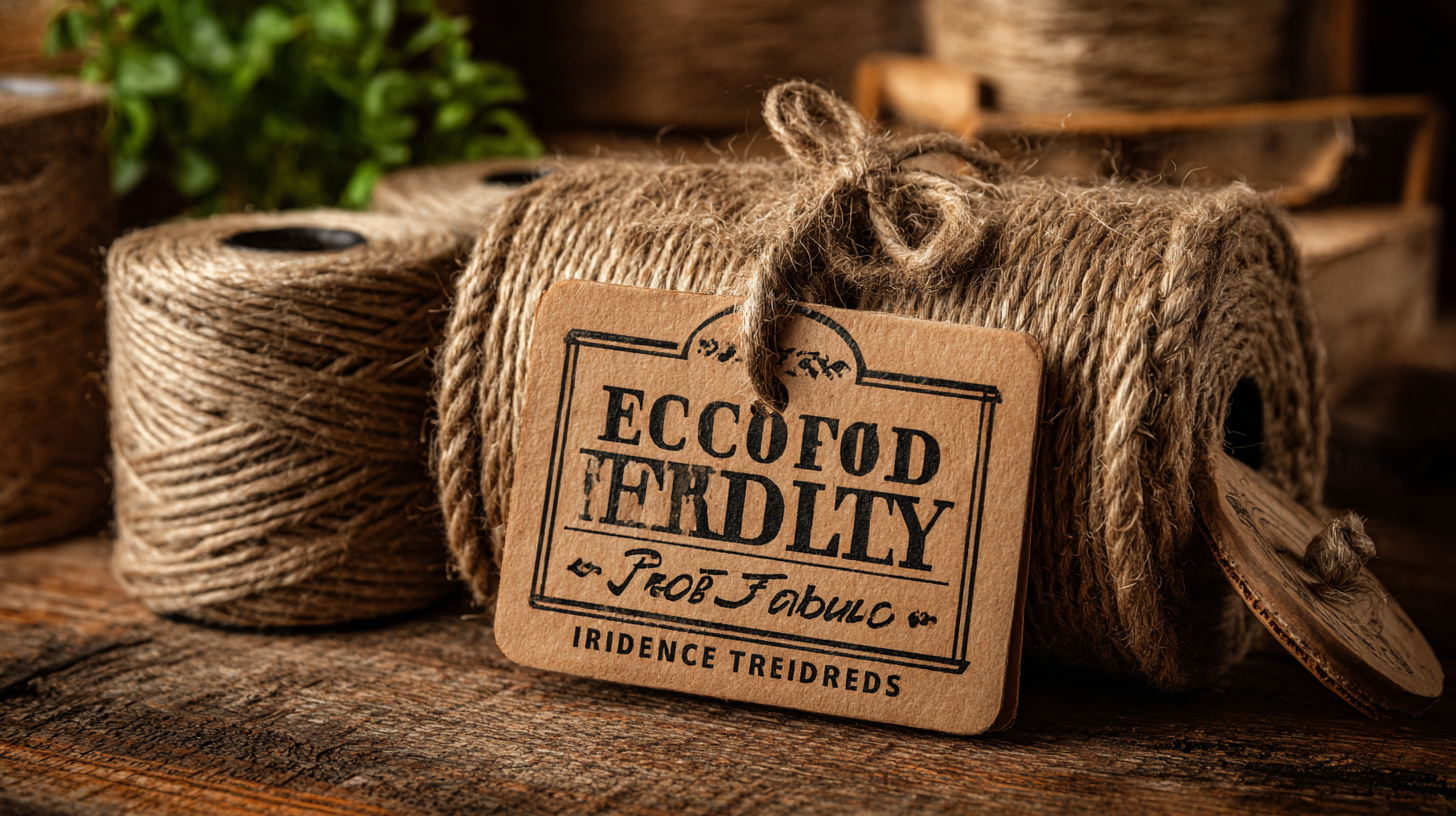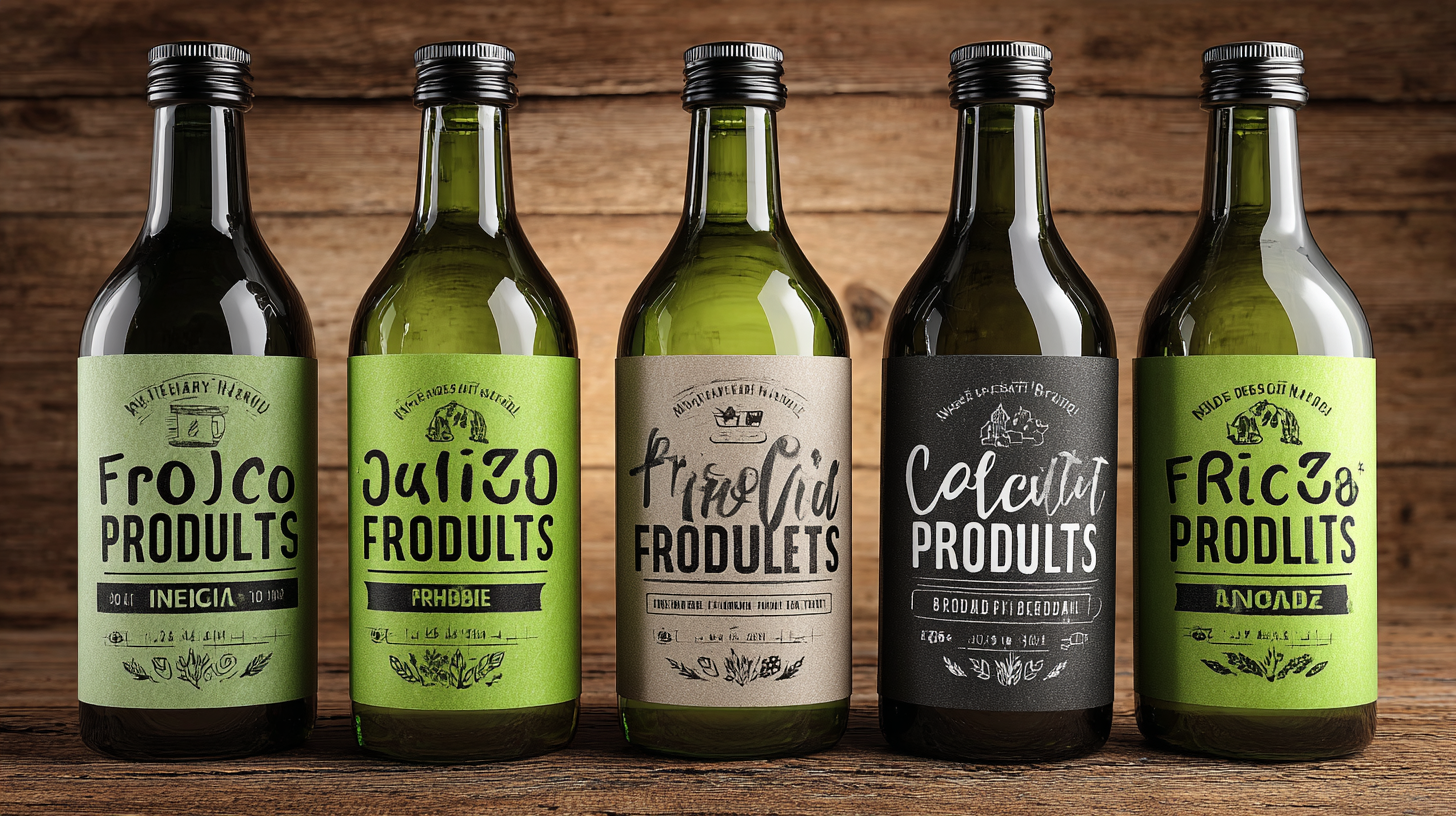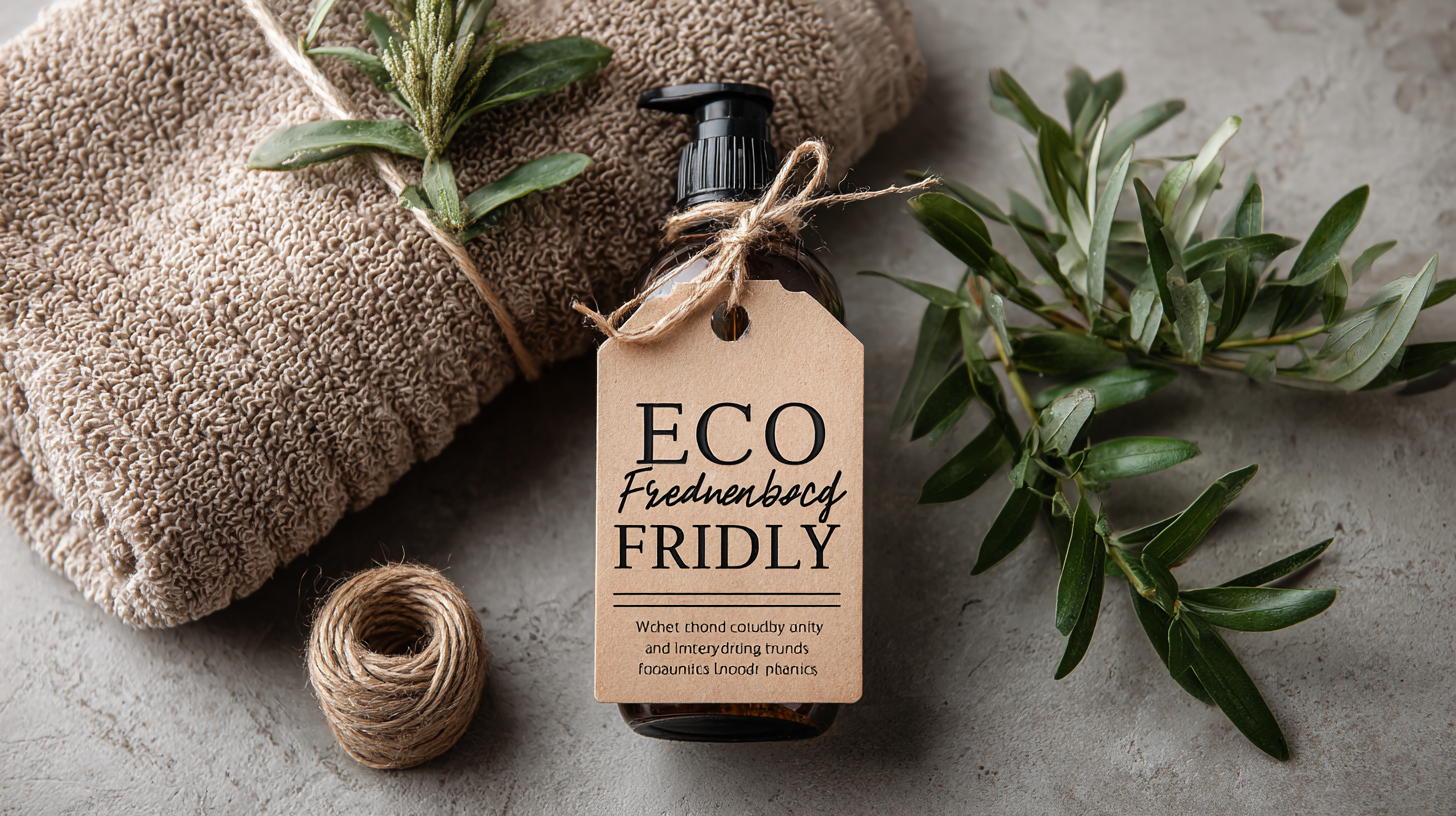5 Tips for Choosing the Best Eco Friendly Product Labels based on 2023 Industry Trends
In an era where sustainability is at the forefront of consumer priorities, the importance of Eco Friendly Product Labels cannot be overstated. As per recent market research by Nielsen, 73% of global consumers say they would definitely change their consumption habits to reduce their environmental impact. Moreover, a report by GlobeNewswire highlights that the global eco-friendly labels market is projected to grow significantly, reaching approximately $20 billion by 2025, as companies increasingly align their branding with eco-conscious values. This shift emphasizes the importance of selecting the right labels, not just for regulatory compliance, but to resonate with environmentally-minded consumers. In this blog, we will explore five essential tips for choosing the best Eco Friendly Product Labels, ensuring that your product stands out in an increasingly competitive and ethically-driven marketplace.

Benefits of Strong After-Sales Service in Eco-Friendly Product Labels
When selecting eco-friendly product labels, the importance of strong after-sales service cannot be overstated. In an industry increasingly driven by sustainability, consumers are looking for reassurance not just in the products they purchase but also in the brand's commitment to quality and support. A robust after-sales service helps build trust and ensures customer satisfaction, which is especially crucial in the eco-conscious market where environmental credentials can often be questioned.
Strong after-sales support means that any issues with labels—whether it’s printing quality, adherence to eco-friendly standards, or product longevity—can be promptly addressed. Brands that invest in this service demonstrate their dedication to customer care and transparency, aligning perfectly with the values of eco-conscious consumers. Additionally, efficient communication channels and a willingness to engage with customer feedback can lead to continuous improvements in product offerings, ultimately benefiting the entire industry focused on sustainability. In 2023, a company that emphasizes strong after-sales service not only enhances its reputation but also fosters loyalty among environmentally aware consumers.

Understanding the Importance of Maintenance Costs for Sustainability
When considering eco-friendly product labels in 2023, maintenance costs play a pivotal role in determining long-term sustainability. Companies that focus solely on the initial investment may overlook the ongoing expenses associated with maintaining eco-friendly practices. For example, choosing biodegradable materials might reduce waste, but if the maintenance costs for implementing these solutions are significantly higher than traditional methods, businesses may struggle to sustain these initiatives over time. Therefore, it’s crucial to evaluate not only the upfront costs but also the lifecycle costs associated with eco-friendly product labels.
Moreover, understanding maintenance costs extends beyond financial implications. It also involves assessing the ecological impact of these choices. Sustainable materials often require specific handling or storage conditions to maintain their environmental benefits. Businesses must consider whether they have the infrastructure and resources to manage these requirements effectively. By thoroughly investigating both the costs and the logistical aspects of maintaining eco-friendly labels, companies can make informed decisions that align with their sustainability goals while ensuring operational efficiency.
5 Tips for Choosing the Best Eco Friendly Product Labels based on 2023 Industry Trends - Understanding the Importance of Maintenance Costs for Sustainability
| Label Type | Material | Cost per Unit | Durability (Years) | Maintenance Cost | Recyclability Rating |
|---|---|---|---|---|---|
| Biodegradable | Plant-based polymers | $0.10 | 2 | $0.05 | 90% |
| Recycled Paper | 100% recycled paper | $0.08 | 4 | $0.02 | 85% |
| Bioplastics | PLA (Polylactic Acid) | $0.12 | 3 | $0.04 | 80% |
| Compostable | Starch-based | $0.15 | 1 | $0.06 | 95% |
| Organic Cotton | Organic cotton fabric | $0.20 | 5 | $0.03 | 90% |
Key Trends in Eco-Friendly Labels that Enhance Consumer Trust
As the demand for eco-friendly products continues to rise, it's essential for brands to pay close attention to label design. Key trends in eco-friendly labeling can significantly enhance consumer trust, allowing potential buyers to feel more confident in their purchasing decisions. One major trend is the use of transparent sourcing information, where brands clearly communicate the origin of their materials and their environmental impact. This transparency fosters trust and encourages a deeper connection between the consumer and the brand.
Another emerging trend is the incorporation of certifications and eco-labels. Consumers today are more environmentally conscious than ever, and they actively seek products that are sustainably sourced and packaged. Labels that display recognized eco-certifications communicate a commitment to sustainability, making products more appealing. Moreover, innovative labeling materials, such as biodegradable or recycled labels, not only increase product authenticity but also align with the values of eco-conscious consumers, further enhancing brand loyalty in a rapidly growing market.
Innovative Practices to Reduce Repair Costs in Eco-Labeling
In a rapidly evolving market, the eco-labeling sector is increasingly adopting innovative practices that not only enhance sustainability but also significantly reduce repair costs. According to a recent report by the Sustainable Packaging Coalition, companies practicing efficient eco-labeling can reduce their repair and maintenance expenses by up to 20% compared to traditional labeling methods. This shift towards eco-friendly products can be attributed to advances in material technology and design, allowing brands to create labels that are not only sustainable but also cost-effective.
For businesses looking to embrace eco-friendly product labels, consider these tips: First, prioritize labels made from recycled or biodegradable materials. A study by the Ellen MacArthur Foundation highlights that products using such materials can elevate brand reputation, increasing consumer trust and preference. Second, evaluate the design process for labels—streamlined designs that minimize waste not only contribute to sustainability but also lower production costs. Finally, engage consumers by providing clear information on the benefits of eco-labeling; transparency can enhance customer loyalty and encourage repeated purchases.
As industry trends continue to shape eco-labeling practices, brands must stay ahead by adapting to these changes and embracing innovative approaches that reduce costs while promoting environmental responsibility.

How After-Sales Support Influences Brand Loyalty in Green Products
After-sales support plays a crucial role in fostering brand loyalty among consumers who prioritize eco-friendly products. In an era where environmental consciousness drives purchasing decisions, customers expect transparency and assistance even after their initial purchase. Brands that provide exceptional after-sales service, such as easy access to resource recycling programs, maintenance tips for sustainable products, or customer service dedicated to eco-friendly initiatives, can significantly enhance their credibility and trustworthiness in the eyes of eco-minded consumers.
Moreover, the willingness of a brand to engage with customers post-purchase reflects its commitment to sustainability and responsible consumption. For instance, brands that follow up with customers to share information on the environmental impact of their products or offer incentives for returning used items can create a sense of community and shared values. This level of support not only reinforces the customer's choice to go green but also cultivates a loyal customer base, driving repeat purchases and enthusiastic word-of-mouth referrals. In a competitive market, it is the quality of after-sales support that can set eco-friendly brands apart and solidify customer relationships over time.
